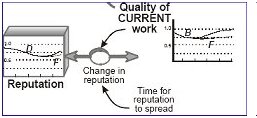Dealing with the intangible factors in a strategic problem can be as important as tangible aspects and managers should not ignore them.

Kim Warren
First published
Business Strategy Review, 2000,
Volume 11 Issue 1, pp 45-58
Price £ Free
Description
Strategic plans and strategy consultants often ignore intangibles because they are felt to be undetectable, unmeasurable and/or unmanageable. Kim Warren shows that intangibles can be measured and managed and provides a framework for incorporating intangibles into a strategic architecture.
This article focuses on the influence of soft factors on business performance, and offers the means to tackle these subtle issues with confidence. By following the approaches outlined here, intangible resources, capabilities, and their behaviour over time can all be evaluated, together with their impact on tangible resources and performance. Together with the papers "The Dynamics of Strategy" and "The Dynamics of Rivalry the article explores four unavoidable features of business strategy, and shown how a dynamic approach offers a set of rigorous, fact-based frameworks to address these challenges:
- Business performance depends on strategic resources, whose levels accumulate and deplete over time. These processes are ubiquitous, not just in business but in all fields of human activity, and give rise to complex behaviours over time.
- The growth and decline of every strategic resource at any moment depends on the current levels of other resources (both tangible and intangible) and capabilities currently in place. This interdependence creates unavoidable feedback that further exacerbates dynamic complexity.
- Unless these dynamics of accumulation, depletion and feedback are captured, there is no possibility of explaining historic performance, and no means of anticipating the time-path of future prospects.
-
Soft factors — intangible resources and capabilities — are powerful drivers of growth and decline in the tangible resources that determine performance at any moment. Thus there is no possibility of understanding performance over time unless these too are evaluated and dealt with rigorously.